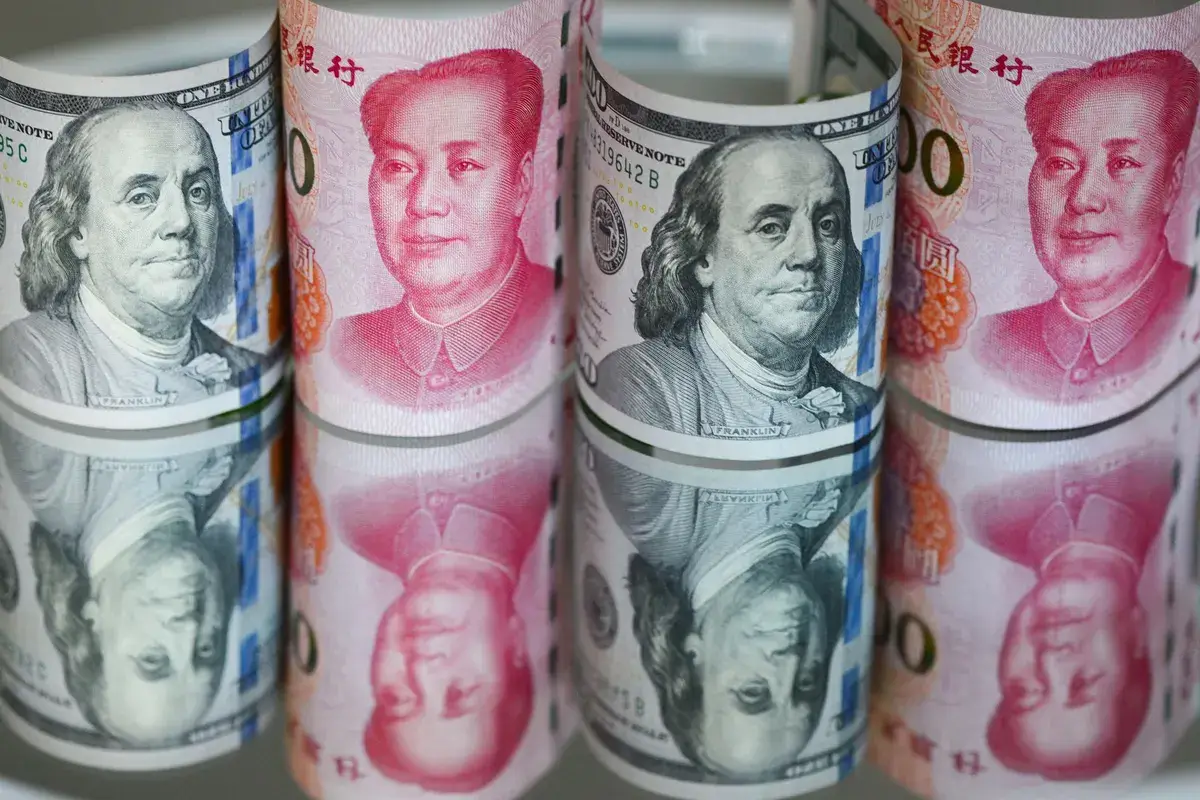Chinese Yuan Strengthens Against US Dollar, Reaches July High
19.07.2024 19:45 1 min. read Alexander Stefanov
The Chinese yuan has recently strengthened against the US dollar, reaching its highest midpoint level for July.
The People’s Bank of China reported that the yuan’s midpoint rate was set at 71.285 per dollar, showing a notable increase compared to previous levels. This adjustment places the yuan in a stronger position relative to the dollar.
The yuan’s recent rise comes amid a slight drop in the value of the US dollar, further boosting the yuan’s value. Despite this progress, the yuan remains about 2.2% weaker than the dollar and continues to leverage market trends to challenge the dollar’s dominance.
Global currency markets are interconnected, and shifts like these can influence investor strategies and potentially strengthen the Chinese economy. As the yuan gains traction, it may attract more investors, enhancing its global presence. Meanwhile, the dollar’s decline is being closely observed by market participants.
China is working to establish the yuan as a more prominent global currency, with efforts including trade agreements with Russia using local currencies. Additionally, changing geopolitical dynamics and concerns about the dollar being used as a geopolitical tool are prompting countries to consider alternative currencies.
-
1
Russia’s Oil Revenues Strained as Exports Decline Again
24.06.2025 18:00 2 min. read -
2
Recession Fears Linger as Economic Signal Flashes Long-Term Warning
25.06.2025 9:00 2 min. read -
3
Robert Kiyosaki Predicts When The Price of Silver Will Explode
28.06.2025 16:30 2 min. read -
4
Trump Targets Powell as Fed Holds Rates: Who Could Replace Him?
27.06.2025 9:00 2 min. read -
5
U.S. PCE Inflation Rises for First Time Since February, Fed Rate Cut Likely Delayed
27.06.2025 18:00 1 min. read
Key U.S. Economic Events to Watch Next Week
After a week of record-setting gains in U.S. markets, investors are shifting focus to a quieter yet crucial stretch of macroeconomic developments.
Robert Kiyosaki Predicts When The Price of Silver Will Explode
Robert Kiyosaki, author of Rich Dad Poor Dad, has issued a bold prediction on silver, calling it the “best asymmetric buy” currently available.
U.S. PCE Inflation Rises for First Time Since February, Fed Rate Cut Likely Delayed
Fresh data on Personal Consumption Expenditures (PCE) — the Federal Reserve’s preferred inflation gauge — shows inflation ticked higher in May, potentially delaying the long-awaited Fed rate cut into September or later.
Trump Targets Powell as Fed Holds Rates: Who Could Replace Him?
Federal Reserve Chair Jerome Powell is once again under fire, this time facing renewed criticism from Donald Trump over the Fed’s decision to hold interest rates steady in June.
-
1
Russia’s Oil Revenues Strained as Exports Decline Again
24.06.2025 18:00 2 min. read -
2
Recession Fears Linger as Economic Signal Flashes Long-Term Warning
25.06.2025 9:00 2 min. read -
3
Robert Kiyosaki Predicts When The Price of Silver Will Explode
28.06.2025 16:30 2 min. read -
4
Trump Targets Powell as Fed Holds Rates: Who Could Replace Him?
27.06.2025 9:00 2 min. read -
5
U.S. PCE Inflation Rises for First Time Since February, Fed Rate Cut Likely Delayed
27.06.2025 18:00 1 min. read


